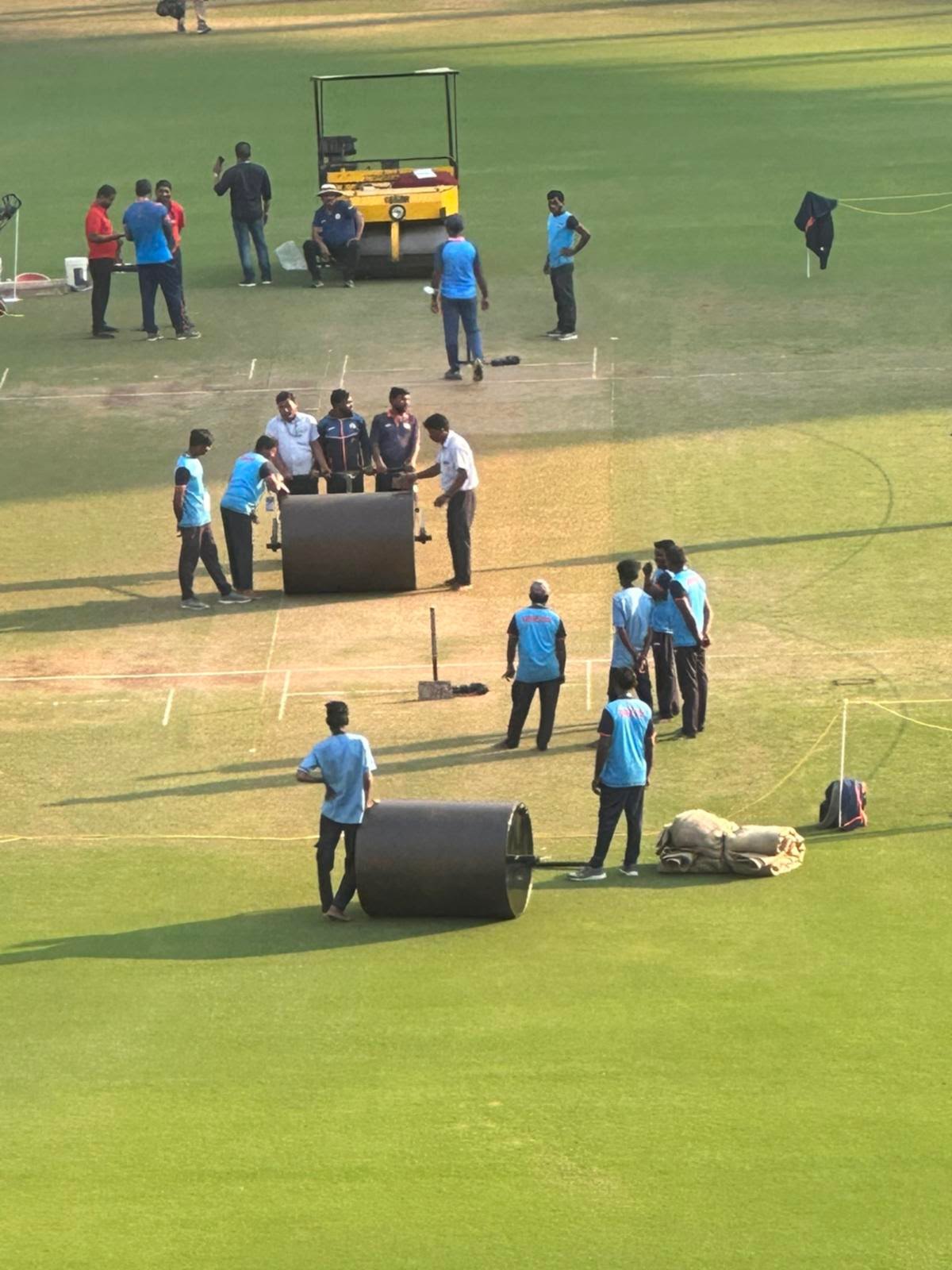
Pitch doctoring to favour host nations’ strengths is hardly a secret of the cricket world, but it has never been this blatant.
Generally speaking, Australian and South African pitches are fast and bouncy, English conditions are ideal for swing and seam, and Asian wickets are a spinner’s paradise.
That much has always been clear, with or without evidence of the process that made it so.
But photos emerging out of India have exposed a clear ploy from curators in Nagpur to doctor the playing surface in favour of India’s spinners for the first Test, which starts on Thursday.
Respected Indian cricket journalist Barat Sundaresan – who now lives in Australia but is in India to cover the Border-Gavaskar Trophy series – posted photos of ground staff appearing to prepare the all-important surface to wreak havoc on the Aussies.
“Interesting treatment of the pitch in Nagpur,” Sundaresan said on Tuesday night.
“The ground staff watered the entire centre of the surface and only the length areas outside the left-hander’s leg stump and then rolled only the centre, stopping short every time they got to the good length areas at both ends.”
Sundaresan’s photos show a clear difference in colour between the centre of the wicket and where India’s spinners are likely to land the ball when bowling to Australian left-handers David Warner, Usman Khawaja, Travis Head, Alex Carey and Matthew Renshaw, if he is selected.
Drier pitches deteriorate faster, making it more conducive to spin bowling because of the grip, turn and unpredictable bounce it allows.
Warner and Head, in particular, have historically struggled in sub-continental conditions, and Indian spinners Ravi Ashwin, Ravindra Jadeja and Axar Patel loom ominously, even more so with a deliberately altered hot spot on which to land their deliveries.
The conditions may put Victorian right-hander Peter Handscomb into the calculations for selection, especially given he is considered one of Australia’s best players of spin bowling.
The Board of Control for Cricket in India (BCCI) sends official curators to oversee the preparation of Test wickets, and there is nothing in the ICC rules that disallows host nations preparing favourable wickets. The condition of the surface will, though, be assessed in the aftermath of the match to determine if there was a fair contest between bat and ball, as every Test pitch is.
Regardless, the first Test is almost certain to be spin-dominated if recent matches at the venue are anything to go by, after Gujurat collapsed to be all out for 54 last month in India’s domestic competition, the Ranji Trophy. (7News)
